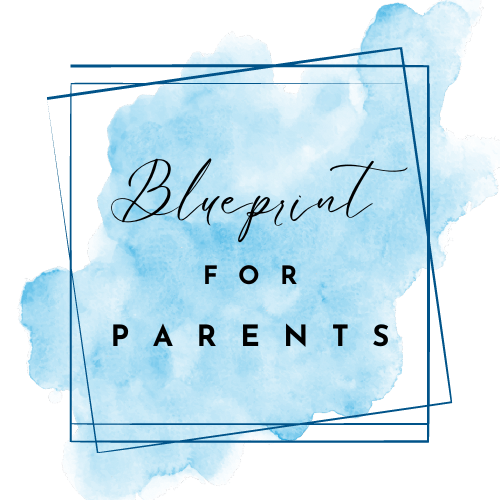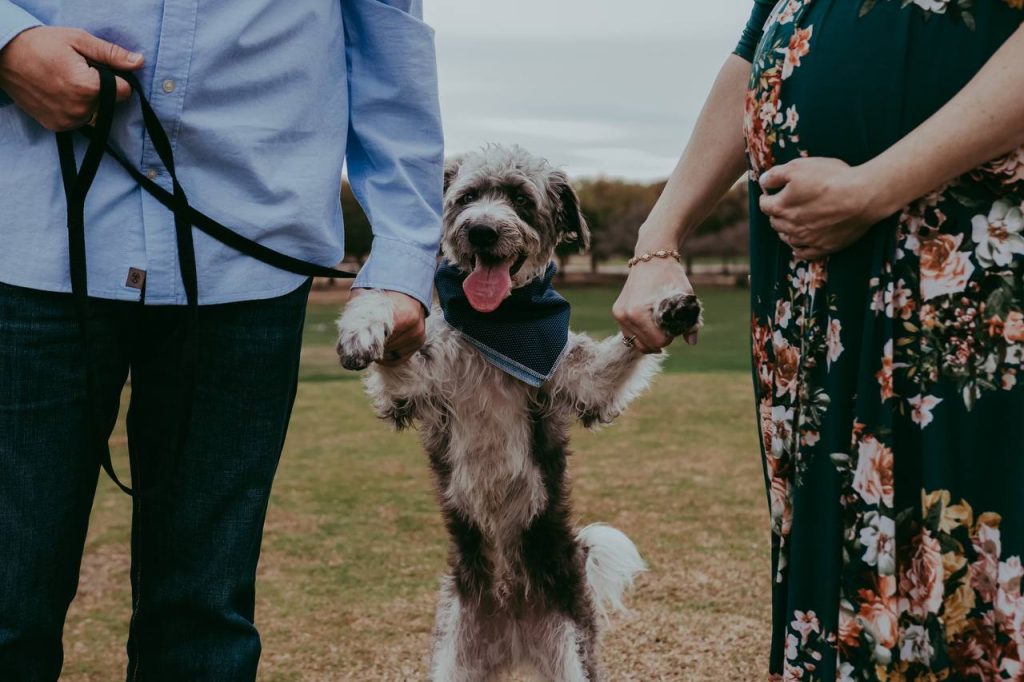
Expecting your first baby and feeling nervous about how your fur baby will adjust? No need to stress! I’ve got you covered with everything you need to know from the prep stage all the way to ensuring forever bestie status between your little one and pup. Let’s dive in!
Preparation
First of all, you can start preparing your dog to welcome the newest member of the pack well before baby arrives. The more time you can give them to adjust to new routines, the better!
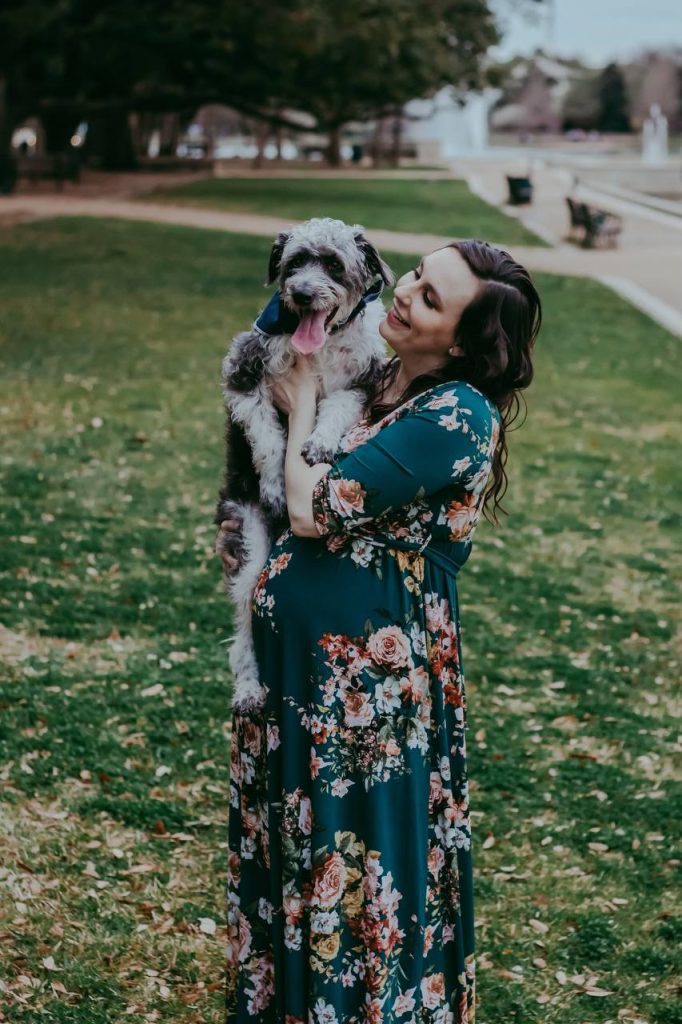
1. Set up Boundaries
Discuss with your partner which areas in your home should be designated as dog-free zones to simplify life with your baby.
-
- Will they be allowed in the nursery?
- Do you want them jumping on the couch when you’re feeding or snuggling baby?
- Prefer no paws on baby’s floor play mat?
- Will they be getting the boot from the dining room when baby starts eating solids?
Once you decide on the off limits areas, start practicing these boundaries with your dog. Consistency is crucial for dogs to grasp new concepts. Plus, you don’t want to wait until baby arrives if at all possible because you want your dog to associate positive things with baby’s arrival, not sudden rule changes.
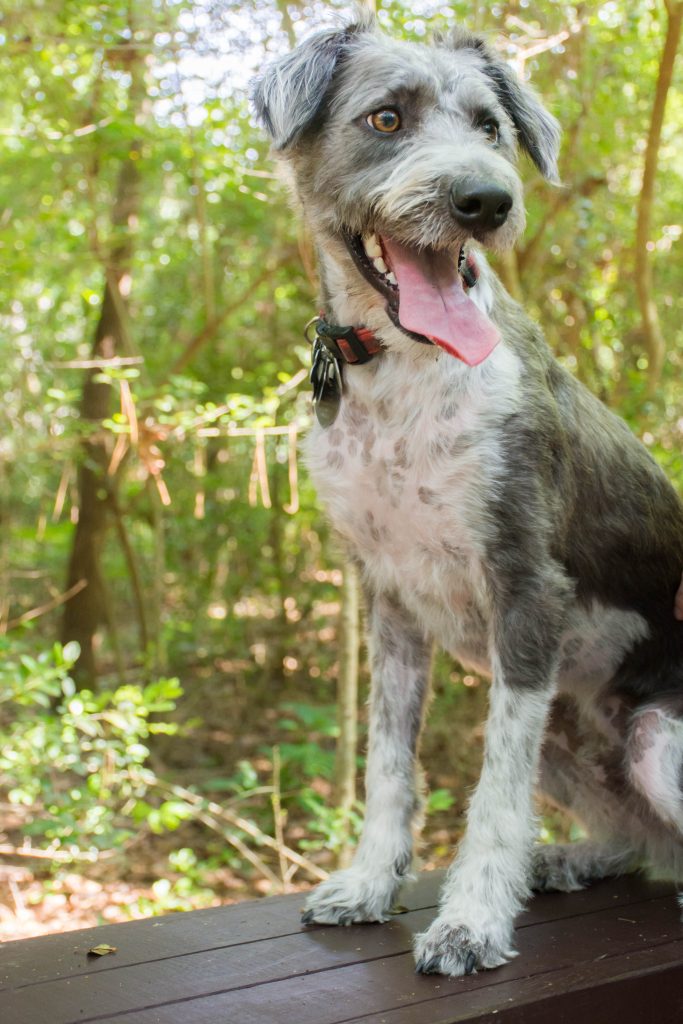
2. Sleeping Arrangements
-
- If your dog currently sleeps in your room, are you planning to continue this after baby is born?
- Evaluate if this is a safety issue since many newborns sleep in a bassinet in their parents’ room for several weeks to months before moving to their nursery
- If you need to, transition pup to their new sleeping arrangements as soon as possible (again, you don’t want them associating baby’s arrival with them getting kicked out)
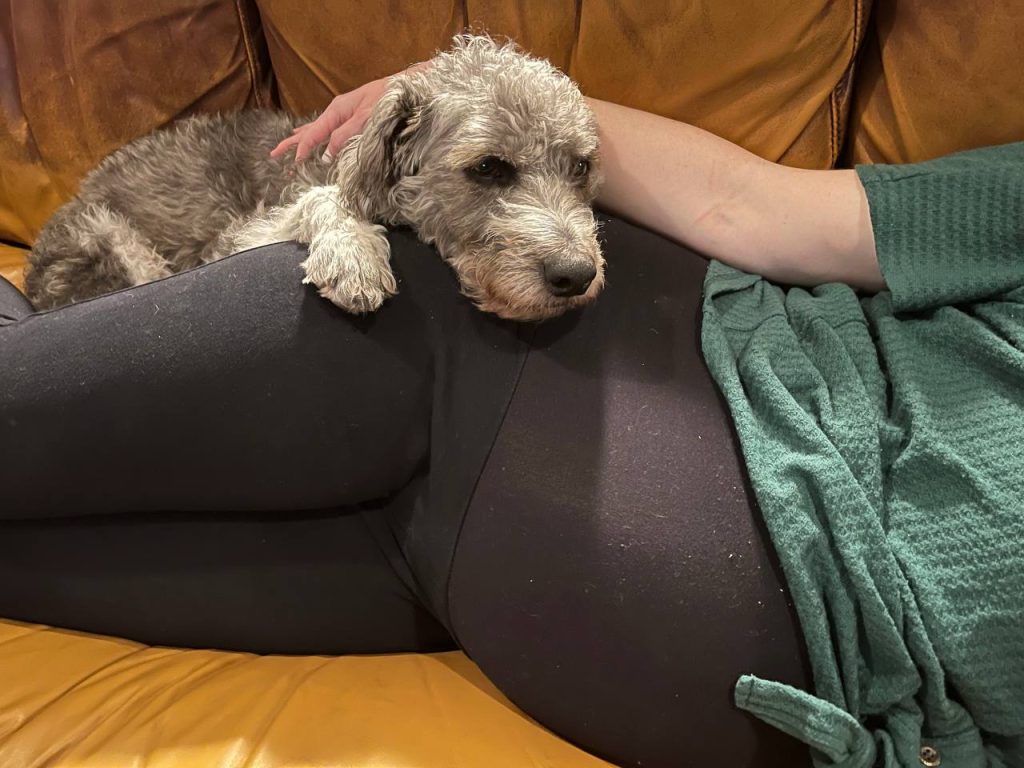
3. Designated Dog Area
-
- Choose a space (room, crate, playpen, or outside area) to be your dog’s designated area
- Form a positive association with this space by providing training treats, toys, and lots of attention/praise
- Never send them to this area as punishment
- Once baby arrives, you can use this area as your go to place for your dog when you need to be able to put baby down
- Bonus: your dog can also retreat here if they’re overstimulated & need their own relaxing space to calm down
4. Refresh Previous Training
This is a great time to reinforce those puppy lessons or teach your dog basic training commands if needed.
Some of the most helpful commands:
-
- Sit
- Stay
- Down
- Go/Kennel Up (to their designated dog space)
- Leave it (when they get curious about all those baby items like pacifiers, bottles etc)
- Quiet (don’t stress this one much, your newborn will sleep through those loud barks in the beginning anyways)
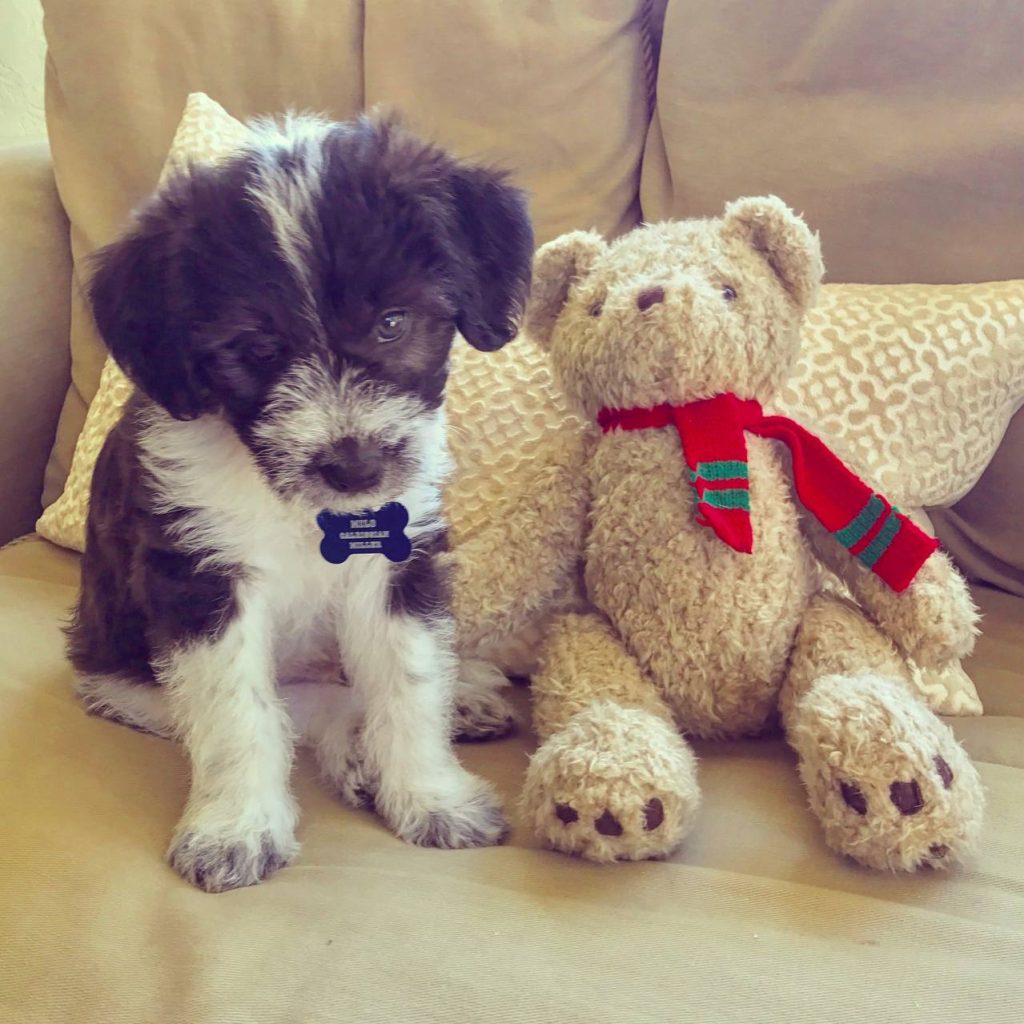
5. Baby Gear
-
- As you purchase or receive baby equipment, go ahead and set it up so your dog can gradually acclimate to sharing their space with all the baby items
- Turn on the baby swing, vibrating bouncer, or any other gadgets so your dog can investigate and adjust before baby is using them
6. Practice Walks
-
- This might sound silly, but start walking your pup with your stroller once you have it
- This will help them get used to walking next to this large piece of equipment
- Also gives you a chance to figure out the best set up for yourself before having your newborn baby along for the ride
- I was comfortable using a waist leash with our pup so I could still having both hands free to maneuver the stroller safely and easily attend to my baby
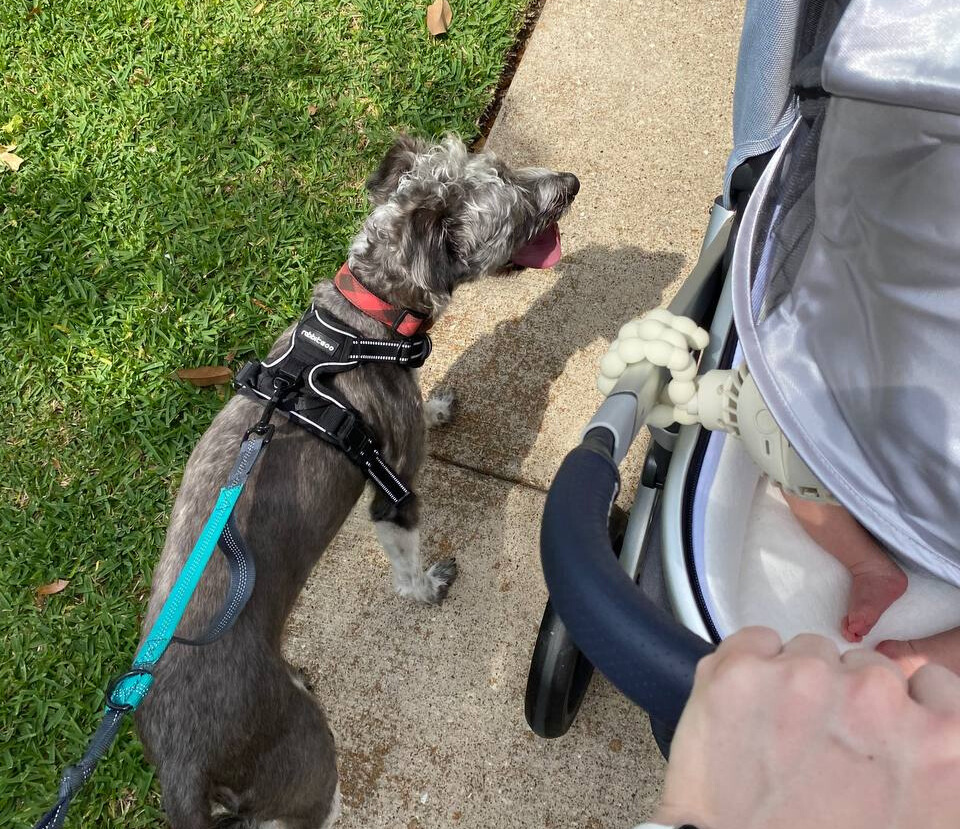
7. Exposure to New Sounds
-
- No you don’t have to play a crying baby soundtrack around the clock, but it doesn’t hurt to occasionally expose your pup to this sound as they will soon be hearing it quite often
- There are plenty of examples online or get your pup around a friend’s baby
- Your dog will most likely respond differently to your baby, but it’s good to know how they may react especially if they’re the howling type
- You can also test out their response to any sound machines/shooshers you plan to use for baby
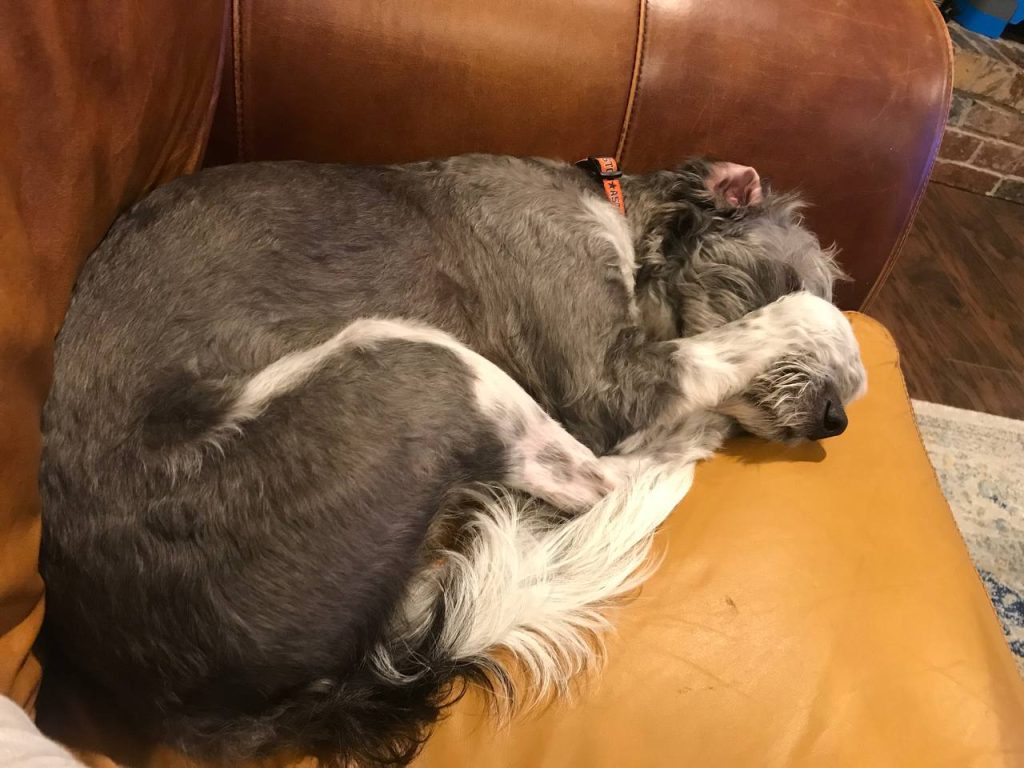
8. Pup Playdates & Walkers
-
- If you have any friends or family with dogs, arrange playdates to help your dog fill up their attention cup & run out that energy
- Another options is hiring a trusted dog walker a few times a week to maintain your dog’s activity
- If possible, start these routines before baby is born so your dog can become familiar & it’s not another transition for them
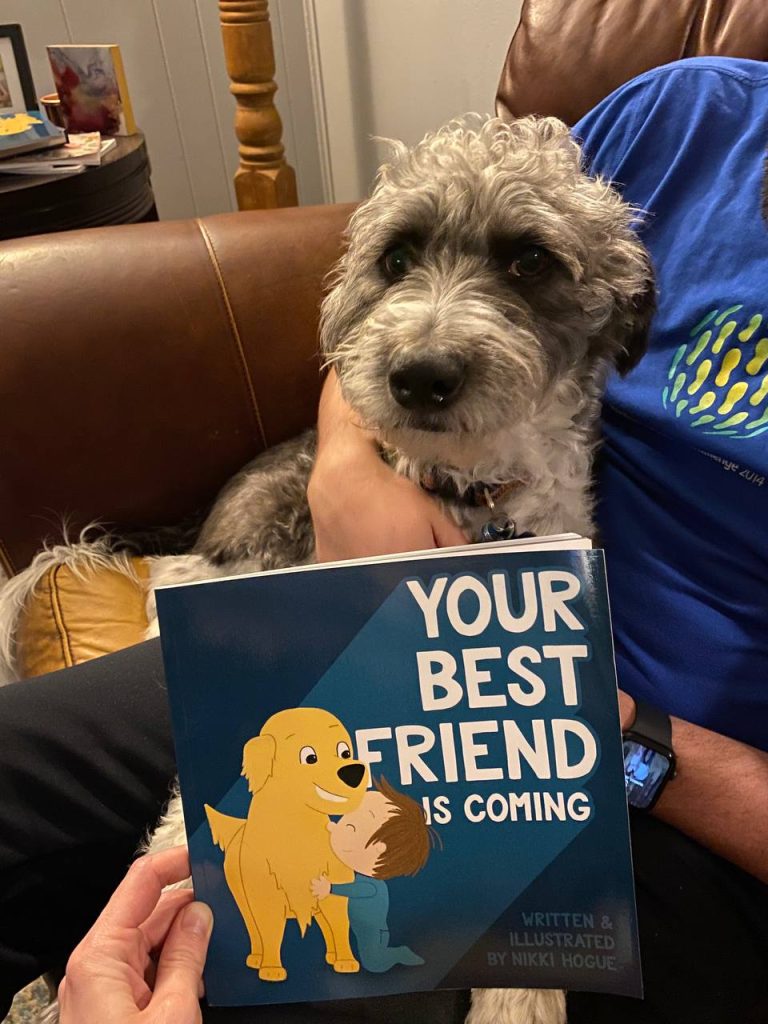
9. Stock up on Stress Relief Toys
-
- Toys that promote chewing are especially beneficial since chewing serves as a natural outlet for dogs to alleviate boredom, loneliness, stress, & anxiety
- When it’s a rainy day, your helpers aren’t available, or you just really need some extra rest, it’s great to have plenty of toys on hand to entertain your pup
- We loved the classic kong toy. We would mix our pup’s dog food with a little bit of water and scoop it into the kong then smear some peanut butter at the opening and freeze it. It kept our pup occupied for a really long time and he was always more chill after.
- Other fun toy options: Snuffle Mat, treat puzzle, chew toy
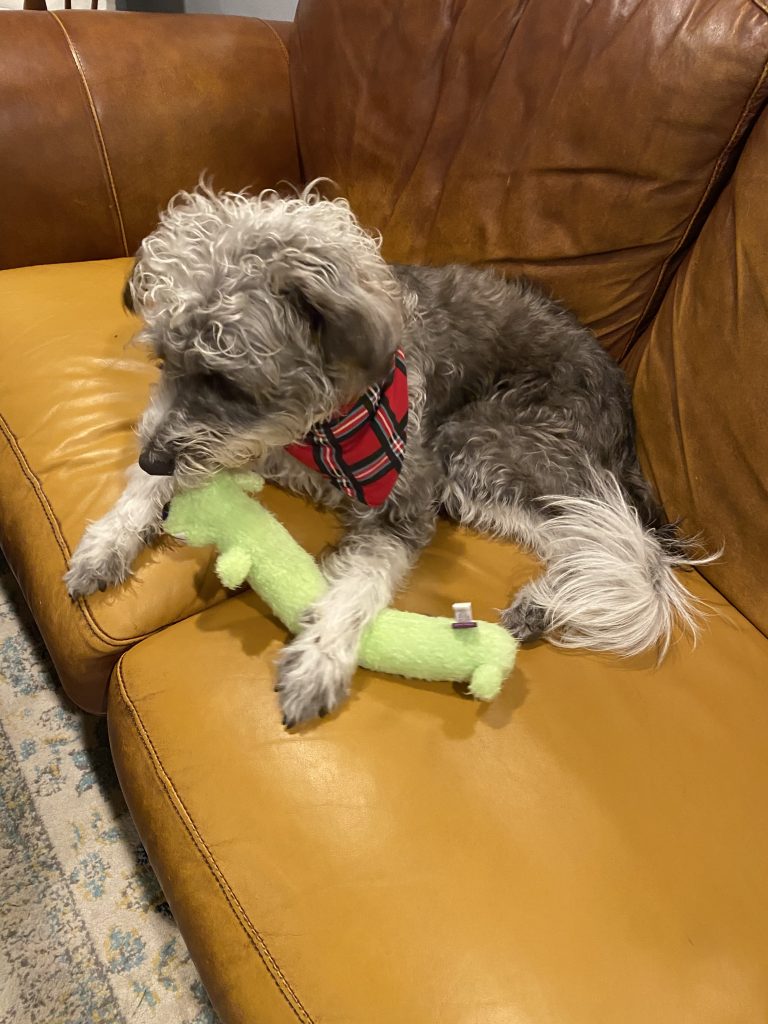
10. That Magical Baby Smell
-
- Send one of baby’s items with a friend/family member to introduce baby’s scent to your pup before the big meet up
- You can use a swaddle blanket baby used or any clothing/hat they’ve worn
- Bonus – have the person give pup extra treats & praise when letting them sniff baby’s items
- You can continue offering baby’s items for their curious snouts
- Our pup snuggled up with our baby’s blanket & insisted on sleeping with it
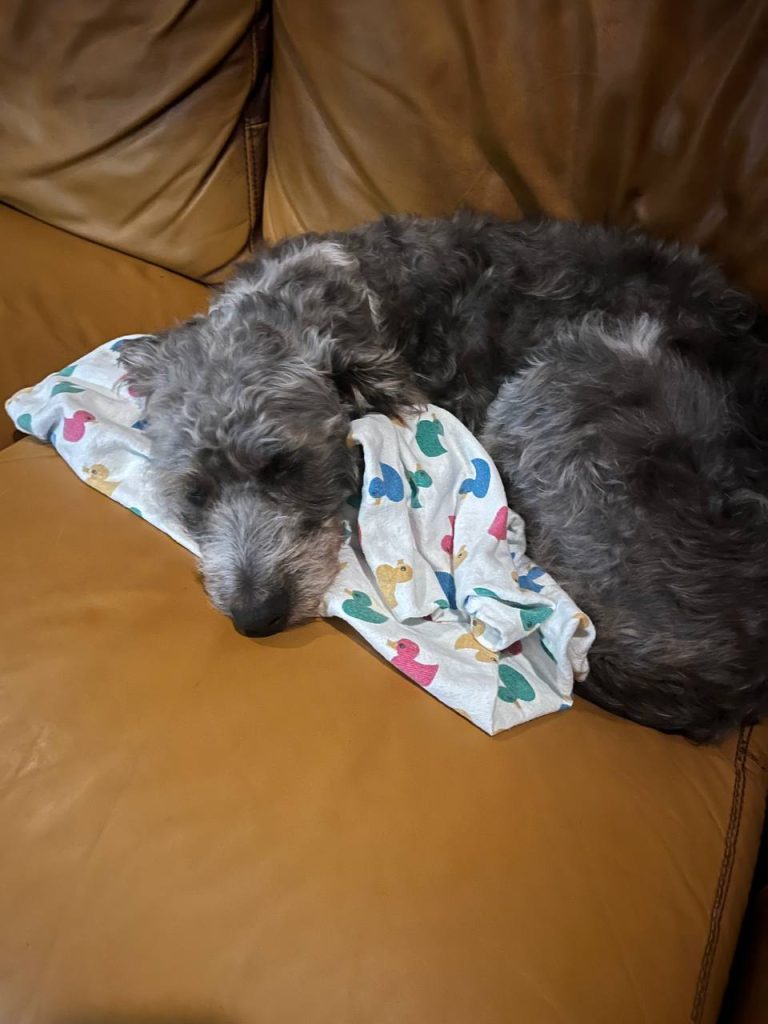
The Introduction
1. Give Yourself Time
-
- If your pet is staying outside the home while you deliver, you may want to give yourself an extra day or two to get settled in at home before having them rejoin the family
- This usually makes for a smoother transition for everyone
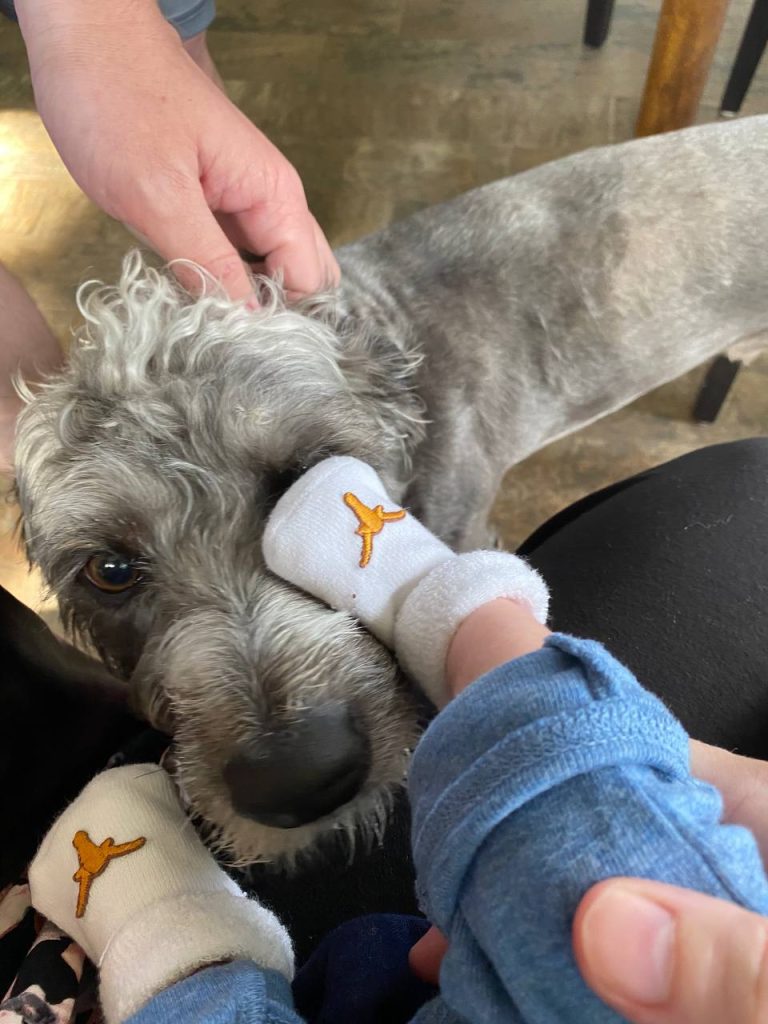
2. Dog Walk Before the Meet Up
-
- Have someone take your dog for a walk or play a fun game of fetch before the introduction to get out any excess energy
3. Low Expectations
-
- Try your best to not stress too much over the first meet up
- Your pup will be adjusting to so many new things in their environment & the shift in their relationship with you
- Their initial reaction isn’t a predicator for their long term relationship with your baby
- Think of it as an ongoing project to foster a positive bond & relationship
4. Protect Mom
-
- If you have a large dog or one who loves to jump, have someone ready to help manage your dog initially to avoid pain or injury to your healing body post delivery
- You most likely won’t have seen your dog for at least a couple of days so they may be more excited than usual
- If possible greet your dog first, give them some love and attention, and then bring baby into the mix
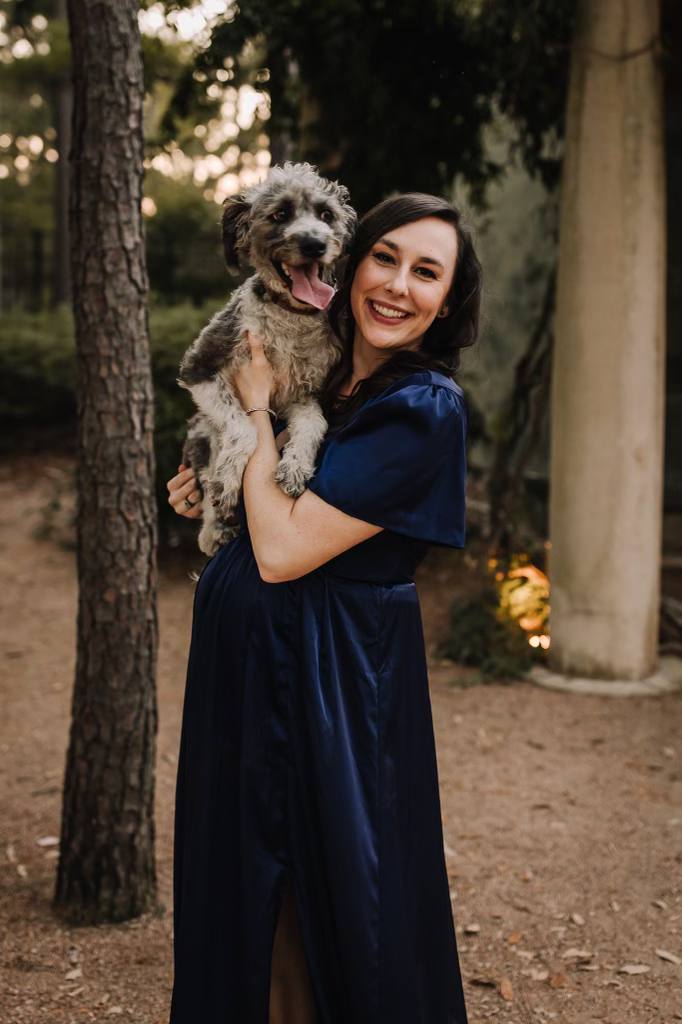
5. Treats & Toys
-
- When your baby and pup finally meet, shower pup with ALL the praise and treats
- Bring out a new, fun toy “from baby”
- Play a game of fetch or whatever is your dog’s favorite to provide a positive experience
6. No Punishment
-
- Try to refrain from punishing or scolding your dog at all costs
- Keep baby at a safe distance so you don’t have to worry about puppers jumping on baby or giving them a tongue bath
- Barking is totally acceptable and your baby will probably sleep through it anyways
- If you little one does startle from your dog’s barking, remember their only way to communicate right now is crying and it doesn’t mean they’re in any pain.
- Reassure baby that they are safe and explain the sound is just their puppy sibling expressing excitement
- If your dog continues to bark and baby is upset by the loud noise, step away to soothe baby and try again later
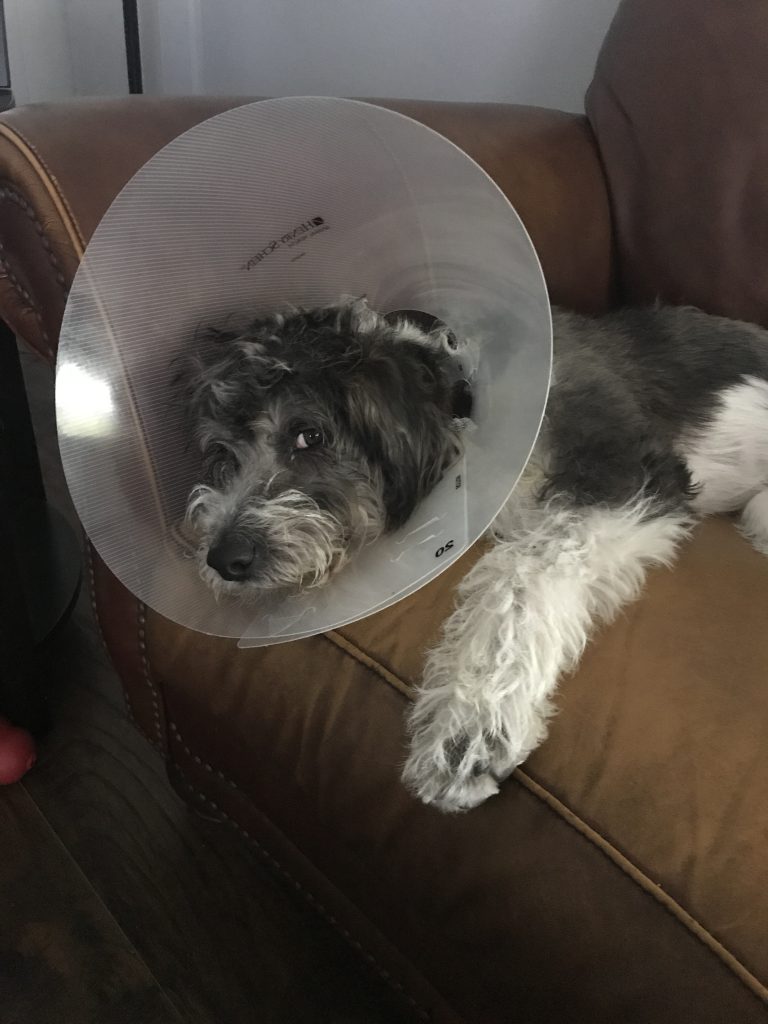
7. Watch for Cues
-
- Look out for your dog’s signs of stress (trembling/shaking, hesitating, tail tucked, whale eyes, panting, yawning, pacing, licking lips, ears back)
- If they’re showing any signs of tension, don’t force a continued interaction with baby and give them a break
- Someone can take baby to another room or you can take your pup to a quiet area and give lots of attention to help them get back to a calm state
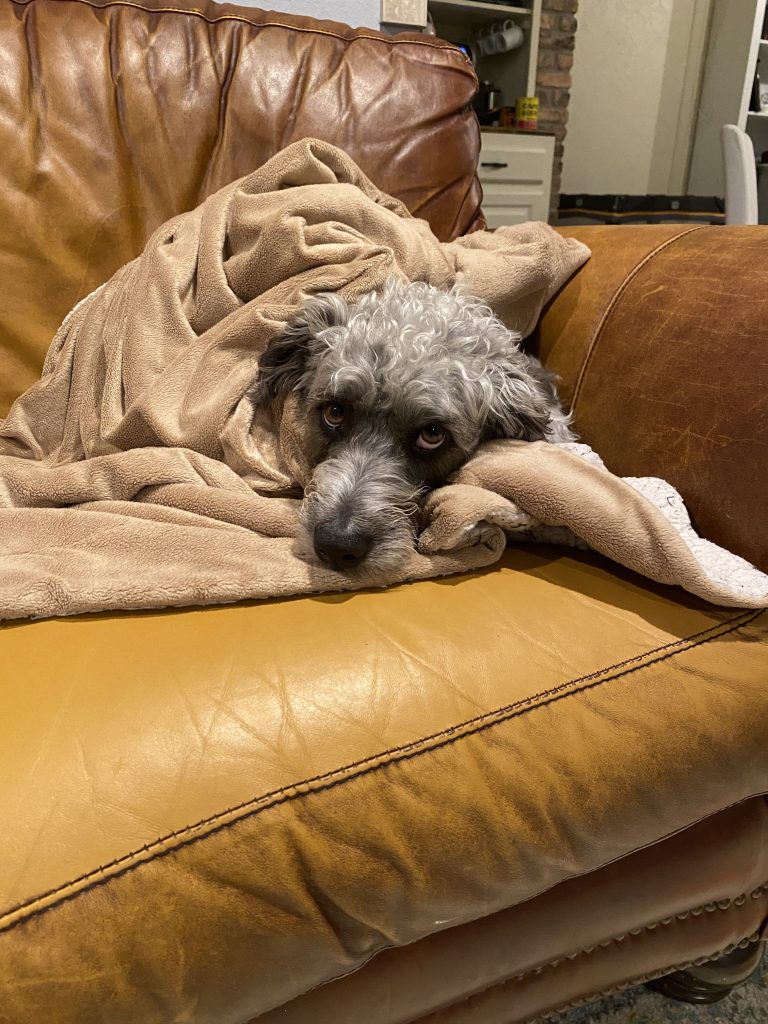
Growing the Friendship & Maintaining Safety
Let’s review some ways you can continue to encourage a positive bond while protecting your little one.
1. Ongoing Positive Reinforcement and Stimulation
-
- Your dog will need more than one positive interaction to solidify a good connection with the newest member of the family
- Repetition is key – keep giving those training treats & lots of praise when your pup is around baby
- Continue to have helpers give pup an outlet for their energy with walks & play time
- Utilize your stock pile of stress relief chewing toys for times when walks/play time aren’t an option
- Now that my kids are older, one of their favorite ways to bond with our pup is to feed him peanut butter from a spoon
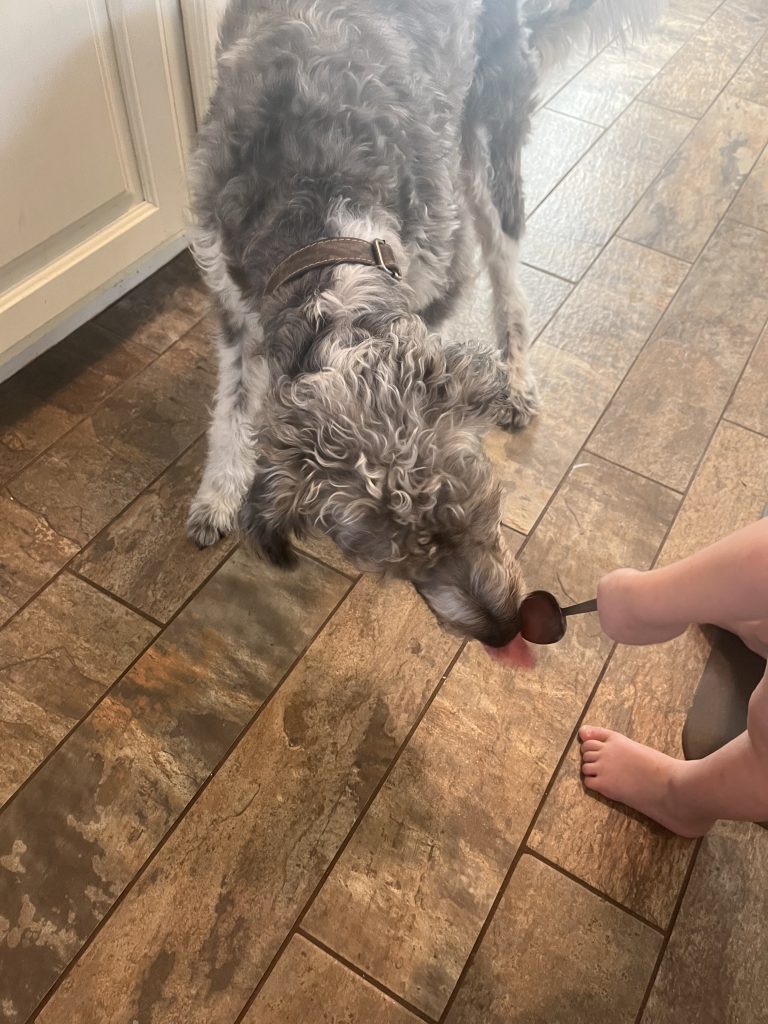
2. Play Time
-
- As your little one grows, they will be able to be more involved in play time with your pup
- You can help them toss a toy to play fetch until they’re able to throw it themselves
- Make sure an adult is the one retrieving the toy from your dog, we never want a child to try to take a toy/bone away from a dog
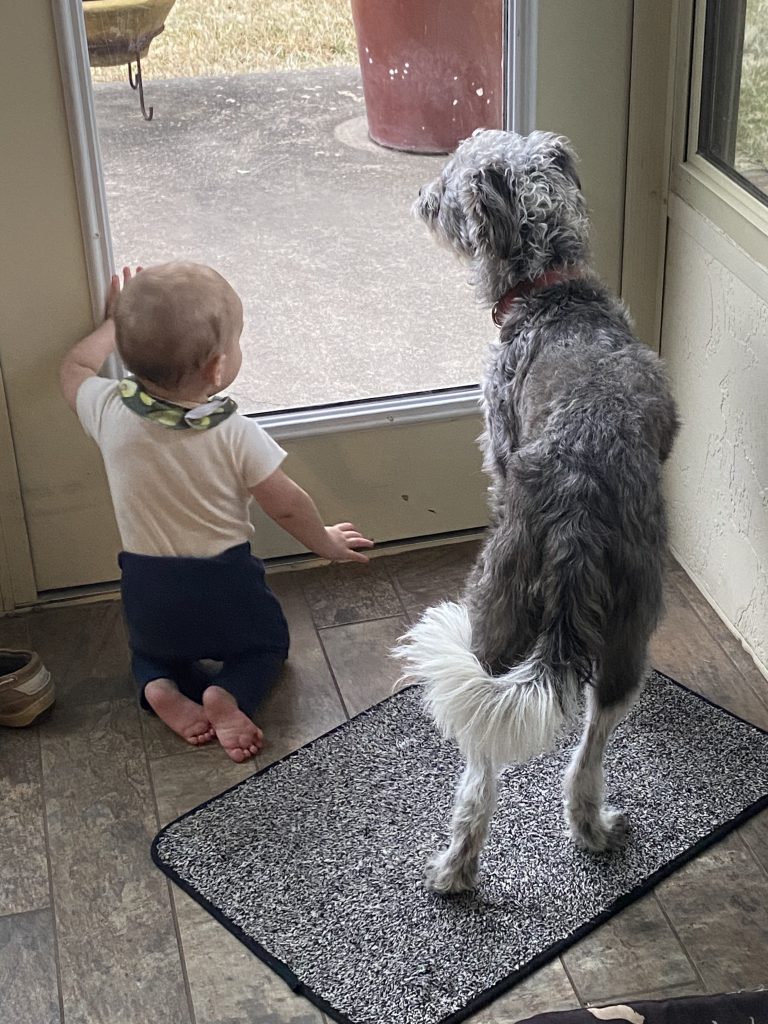
3. Baby Safe Zones
-
- Have a safe places throughout your home to put your baby down that your dog can’t access
- Having safe options to put baby down is necessary for when you need to go to the bathroom or will have your hands tied up with a task
- How you keep your little one safe will depend on your dog’s ability to climb/jump & your home’s layout
- Once baby becomes mobile, you’ll need to ensure the safe zones are also completely baby proofed
- Added Bonus: giving baby a safe space to explore independently is great for brain development & allowing them time to stretch out (not confined in a container) encourages healthy gross motor development
Examples:
-
-
-
- Pack n play in the living room
- Bassinet in your room
- Crib in the nursery
- Play mat in a play yard area
- Blanket on the floor behind a gated doorway
-
-
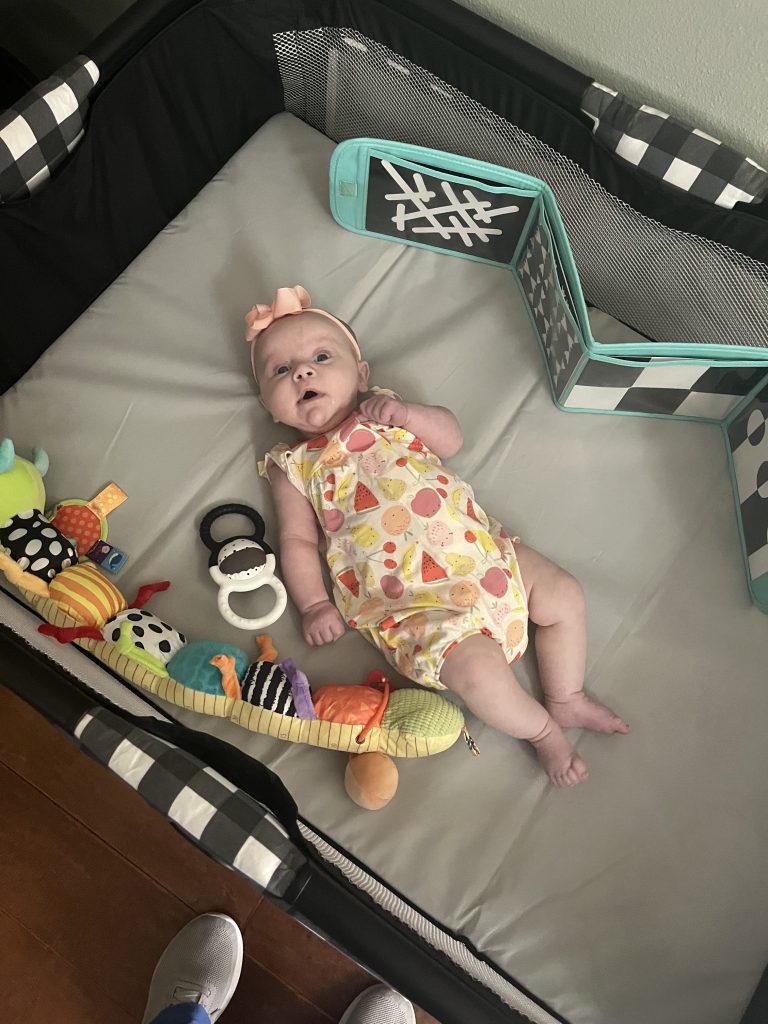
4. Wear Baby
-
- Another option for keeping baby safe & having your hands free is to utilize a baby carrier
- My favorite carrier for keeping baby snug & secure in those early days is the Baby K’tan (a cozy wrap carrier without the complicated setup – use code BLUEPRINTFORPARENTS for 10% off)
- Wearing baby is especially helpful later in the day when babies are prone to the “witching hours” where they need extra cuddles
- Added bonus: this usually helps babies get better quality, extended naps in the newborn phase, which actually leads to longer stretches of sleep at night
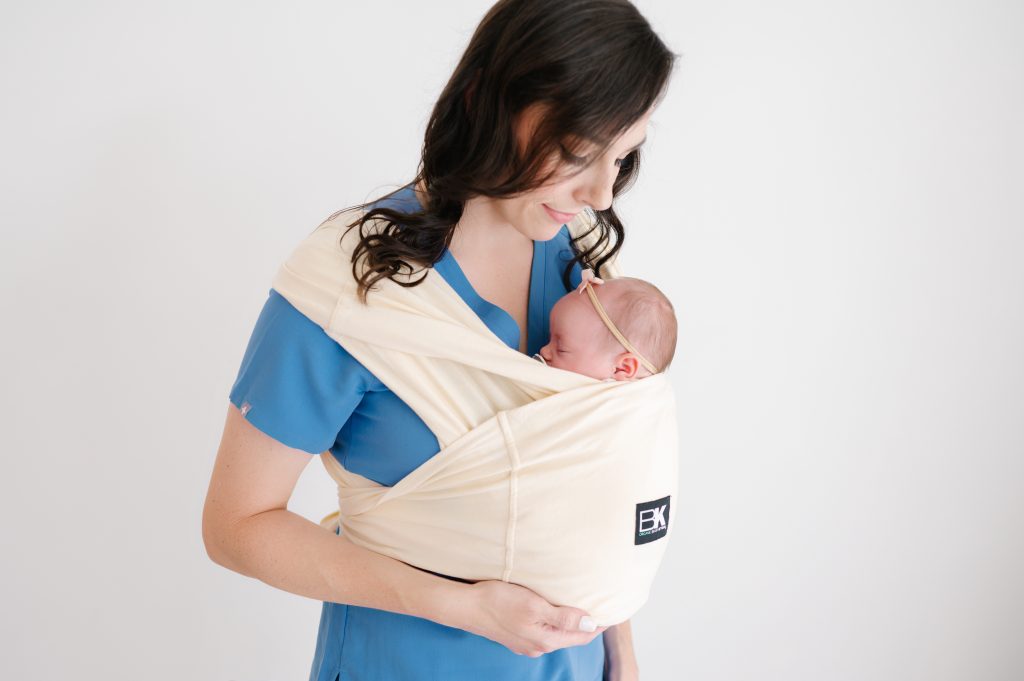
5. Teach Pet Safety
-
- It’s never too early to start teaching your little one pet safety
- Verbalize & model “gentle hands” when petting your dog
- Teach them to never pull on their ears, tail, or fur
- Make sure they know to give your pup space when they’re eating, sleeping, or chewing on a toy
- Explain precautions when meeting other dogs out & about – they need to understand dogs that don’t know them may react differently than their friendly pup at home
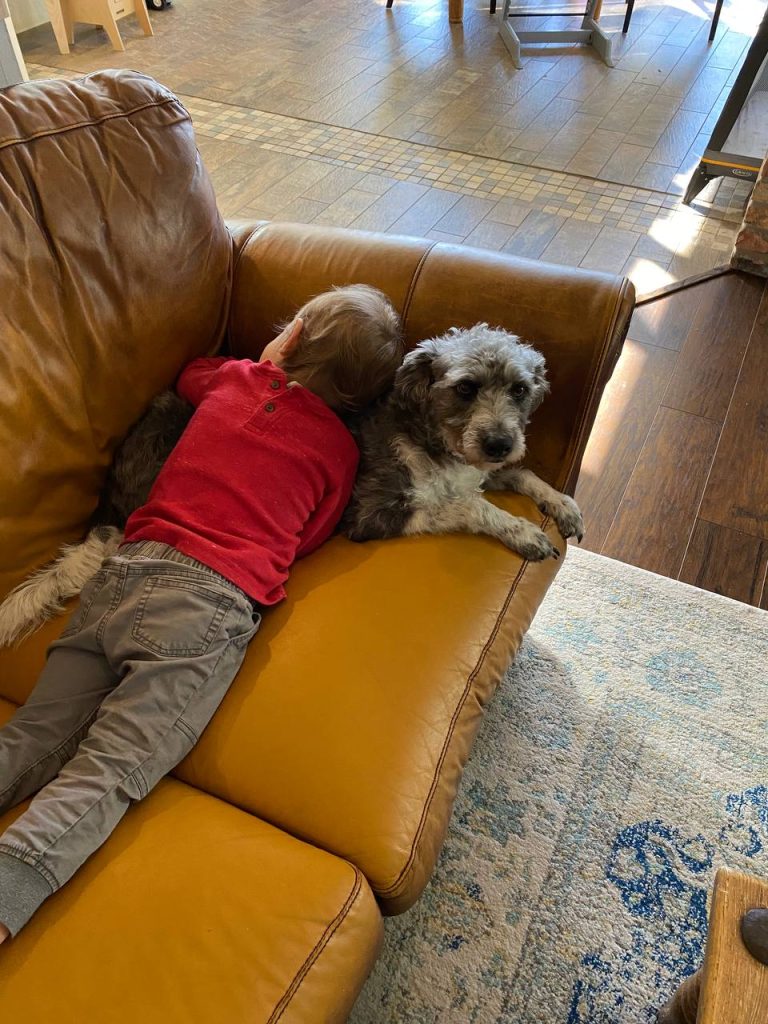
6. Never Alone
-
- No matter how family friendly and calm your dog is, NEVER leave them unattended with your baby
- I know you trust your dog, but animals and babies are unpredictable
- It’s best to always err on the side of caution
At the end of the day, adding a new member to the family is always an adjustment but being proactive to foster a positive bond from the start is so worth it!
Fun Dog Books for Your Little One:
- Good Dog Carl
- Dog’s First Baby
- Your Best Friend is Coming
- Tails are Not for Pulling
- That’s Not My Dog
- Doggies
- Love Me Gently
- If I Were a Dog
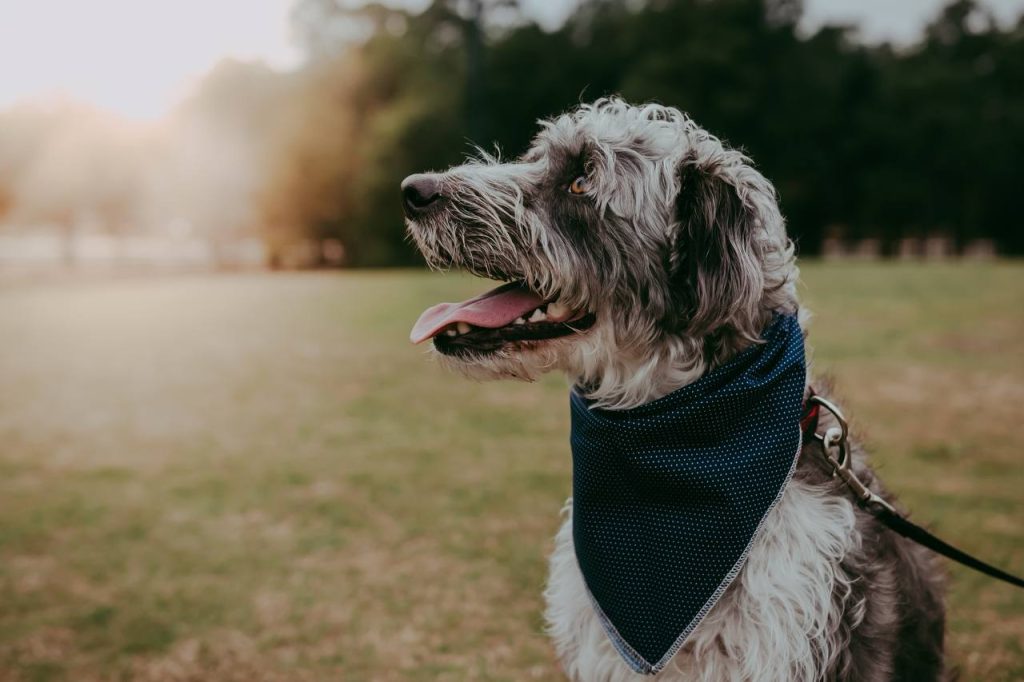
As an Amazon Associate, I earn from qualifying purchases. Click HERE for detailed information on my Affiliate Disclosure.
